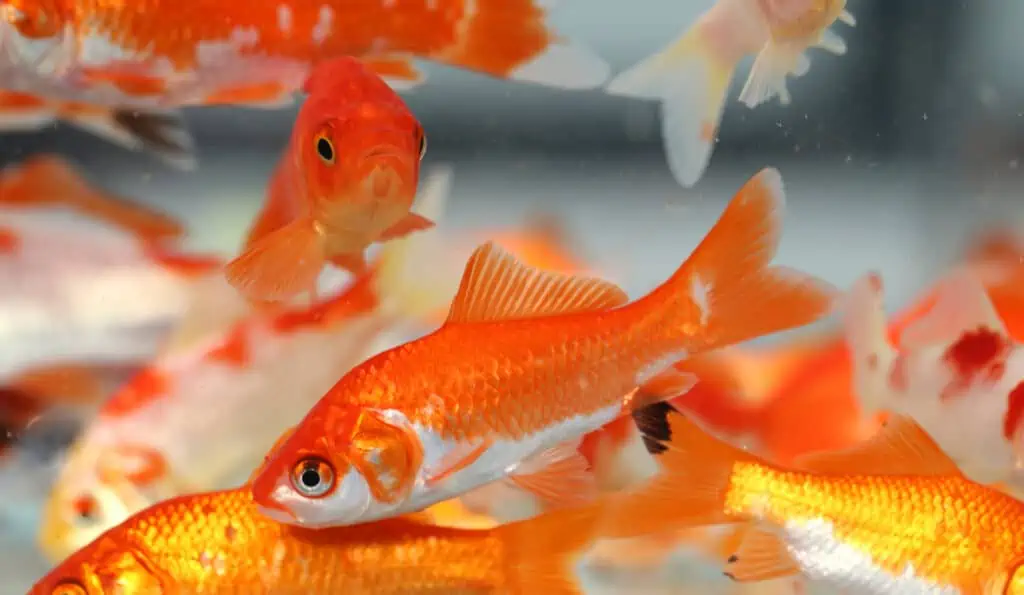Key Takeaway
| Difficulty Level | Moderate |
|---|---|
| Time Required | 3-6 months |
| Cost | Low to moderate |
| Best Time to Breed | Spring or early summer |
| Important Factors | Tank setup, water quality, temperature, feeding, and monitoring |
If you have a fascination with goldfish and want to try your hand at breeding them, this guide will provide you with all the necessary information. Breeding goldfish requires patience, dedication, and attention to detail.
By following these steps, you can successfully breed goldfish and witness the delightful process of new life being brought into your aquarium.
Preparing the Breeding Tank
Before you begin breeding goldfish, it is essential to set up a proper breeding tank. Consider the following factors:
Tank Size
Goldfish breeders often recommend using a separate breeding tank that is at least 20 gallons in size. The larger the tank, the better, as it provides enough space for the breeding pairs and their offspring.
Tank Setup
Create an environment that mimics their natural habitat. Use a substrate of fine gravel or sand, live or artificial plants for hiding spots, and a good quality filtration system to maintain water cleanliness.
Water Quality
Maintaining optimal water conditions is crucial for successful goldfish breeding. Perform regular water changes to keep the water clean and test the water parameters using a test kit. Goldfish thrive in pH levels between 6.5 and 8.0.
Temperature and Lighting
Goldfish prefer temperatures between 68°F and 74°F for breeding. Use a reliable aquarium heater to maintain a consistent temperature. Ensure the tank receives 10-12 hours of light every day.
Selecting and Pairing Goldfish
Choosing the right goldfish for breeding is essential. Consider the following factors:
Age and Size
Select goldfish that are at least one year old and have reached sexual maturity. Males typically have small white bumps called breeding tubercles on their gill covers and pectoral fins.
Complementary Pairs
Pair goldfish of similar size and body shape to increase the chances of successful breeding. Avoid pairing long-bodied goldfish with fancy varieties, as the breeding process may be challenging.
Introducing the Breeding Pair
Place the chosen male and female goldfish in the breeding tank together. Observe their behavior for aggression or signs of stress. If aggression persists, separate them with a physical divider while still allowing them to see each other.
The Breeding Process
Once the goldfish have settled in the breeding tank, follow these steps to encourage successful breeding:
Monitoring Behavior
Female goldfish will lay eggs, followed by the male fertilizing them. Observe their behavior closely. The male may chase the female and nudge her abdomen to encourage egg release.
Egg Laying and Fertilization
Providing the right environment is crucial for goldfish to lay eggs. Place a spawning mop or a plastic grid in the tank for the eggs to attach to. Once the eggs are laid, the male will release milt to fertilize them.
Removing the Parents
After fertilization, it is important to remove the parents from the breeding tank to prevent them from eating the eggs. Place them in separate tanks with similar water conditions.
Raising the Fry
The hatching period generally takes five to seven days. Once the fry hatch, they will consume their yolk sacs for nourishment. Follow these steps to raise the fry:
- Transfer the fry into a separate rearing tank to protect them from potential predators.
- Feed them live or powdered fried food, such as crushed flakes or brine shrimp, multiple times a day.
- Maintain optimal water conditions, including temperature and water quality.
- Gradually introduce finely crushed dry fish food as the fry grows larger.
Conclusion
Breeding goldfish can be a rewarding and educational experience. By providing a suitable breeding tank, selecting compatible pairs, and maintaining optimal conditions, you can witness the beautiful process of goldfish reproduction and raising healthy fry.
Remember to be patient and attentive throughout the process, and always seek advice from experienced goldfish breeders when in doubt.

Hi, I’m Lila Hart, and I’m just as fish-obsessed as they come! I’ve been enamored with aquatic life since I was a little kid. Now, I’m a marine biologist with over 3 years of hands-on experience in the world of pet fish.
I’ve learned the ropes of fishkeeping through trial and error, and I’m excited to share my knowledge with you. My mission is to help you create a thriving aquatic paradise for your finned companions. Together, we’ll explore the fascinating underwater world of pet fish!

